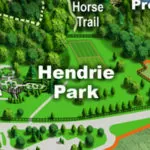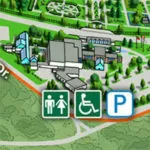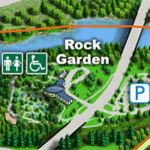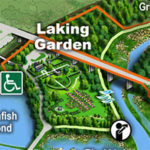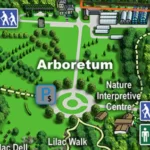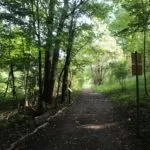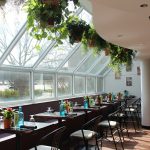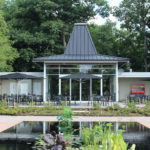| Membership | Price (+HST) |
|---|---|
| Single | $85/year |
| Single Plus | $120/year |
| Family | $130/year |
| Family Plus | $175/year |
| Contributing | $300/year |
| Supporting | $600/year |
| Sustaining | $1,000/year |
| Benefactor's Circle | $2,500/year |
| Director's Circle | $5,000/year |
| President's Circle | $10,000/year |
Grassland Restoration
RBG’s nature sanctuaries contain about 50 hectares of grasslands, 45 of which are being actively managed to help this diverse ecosystem thrive. Grasslands are typically made up of native grasses and flowering plants and contain little to no tree cover. Prairies, meadows, and savannahs are all examples of grassland ecosystems that can be found at RBG. Grasslands maintain their open state by experiencing disturbance, such as fire, grazing, flooding or drought.
Tallgrass Prairie and Oak Savannah Conservation at RBG
A visit to Cootes Paradise’s south side and a walk along the Princess Point Trail (~1km) takes you through two rare habitat types, Tallgrass Prairie and Oak Savanah. A series of interpretive signs will teach you about the ecology of these habitats and their connection to the location’s Indigenous history. Almost 99% of our region’s prairies and savannahs were lost after European settlement. Today, RBG’s nature sanctuaries contain extremely valuable pockets of remnant oak savannah and tallgrass prairie habitat. These remaining ecosystems are under threat from succession to forest, invasive species and a changing climate.
Prairies and savannahs also house a high diversity of Ontario’s rare and endangered flora and fauna, another of many reasons to maintain and restore the integrity of these ecological communities.
Ecological disturbance, such, as fire is critical to maintain grassland habitats. Grassland plants have evolved deep root systems to adapt to fire and drought. Without fire, shrubs and trees invade and shade the prairie flowers and grasses, eventually converting the prairie into a completely different ecosystem. To prevent that scenario, we prescribe spring burns that introduce fire in a way that is highly controlled and safe resulting in renewed habitat for rare species.
Controlled Burning
Ecological disturbance, such, as fire is critical to maintain grassland habitats. Grassland plants have evolved deep root systems to adapt to fire and drought. Without fire, shrubs and trees invade and shade the prairie flowers and grasses, eventually converting the prairie into a completely different ecosystem. To prevent that scenario, we prescribe spring burns that introduce fire in a way that is highly controlled and safe resulting in renewed habitat for rare species.
TENATIVE DATE: Monday, April 14, 2025
Watch: Learn About Controlled Burning
Grasslands at our Escarpment Properties – Berry Tract South and Rock Chapel
Thirty-five hectares of old-field and agricultural land located within our Escarpment Properties (Rock Chapel and Berry Tract) are in the beginning stages of being restored to grassland prairie ecosystems. At these locations we are using a mowing regime instead of fire to mimic the natural disturbances required to maintain grassland conditions. Our conservation goal is to create and maintain a network of grassland ecosystems to provide essential habitat for wildlife as meadows disappear throughout southern Ontario. This especially includes birds that depend on native grasslands for breeding, like the Bobolink, a species at risk whose population has been on a steep decline since the 1980’s. For more information on Canada’s grassland birds and to see how other bird populations are doing check out The State of Canada’s Birds 2019.
Within the grassland fields, ephemeral ponds (small temporarily wet depressions) are being constructed to increase plant diversity, provide drinking water to wildlife, create amphibian habitat, and help reduce soil erosion by slowing the flow of water across the landscape.
While native grasses represent most of the plant cover found within a grassland, wildflowers also play a critical role for wildlife, including pollinators. The Monarch Butterfly, a declining species at risk, needs meadow habitat not only for the wildflowers – which let them “fuel-up” for migration – but for the Milkweed plants the caterpillars depend on for food.
RBG carefully monitors birds, butterflies, and plants throughout our grassland sites to help us measure the success of our conservation work.
Resources
Learn more about RBG’s conservation efforts with these downloadable PDF resources and external links.

Support Conservation at RBG
These conservation projects are possible thanks to the generous support of RBG Members and donors. With a donation to Growing up Green, you can ensure an active, vibrant and healthy future for the children of today and tomorrow through our horticultural and conservation projects.
Royal Botanical Gardens (RBG) is the largest botanical garden in Canada, a National Historic Site, and registered charitable organization with a mandate to bring together people, plants and nature.

